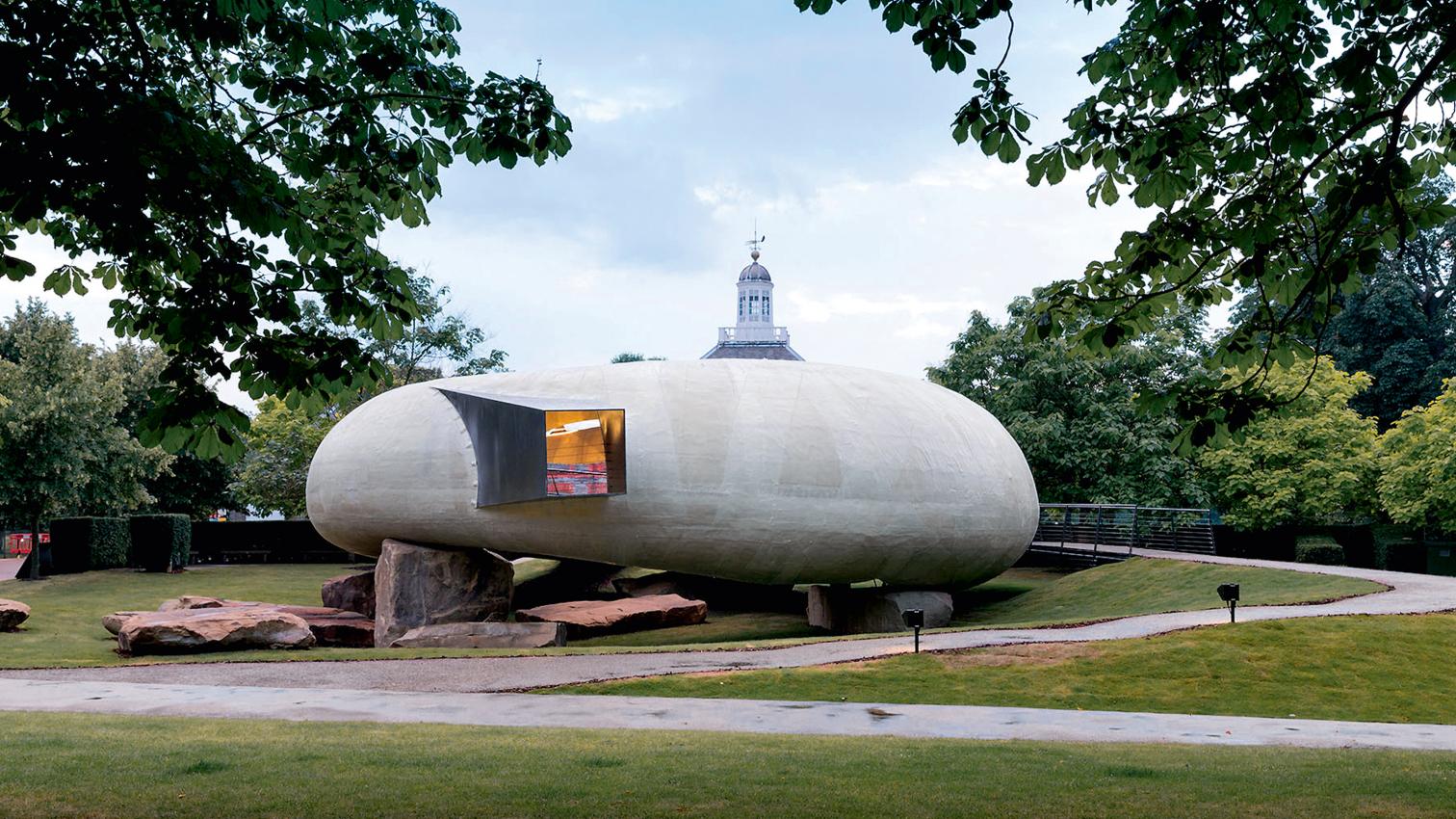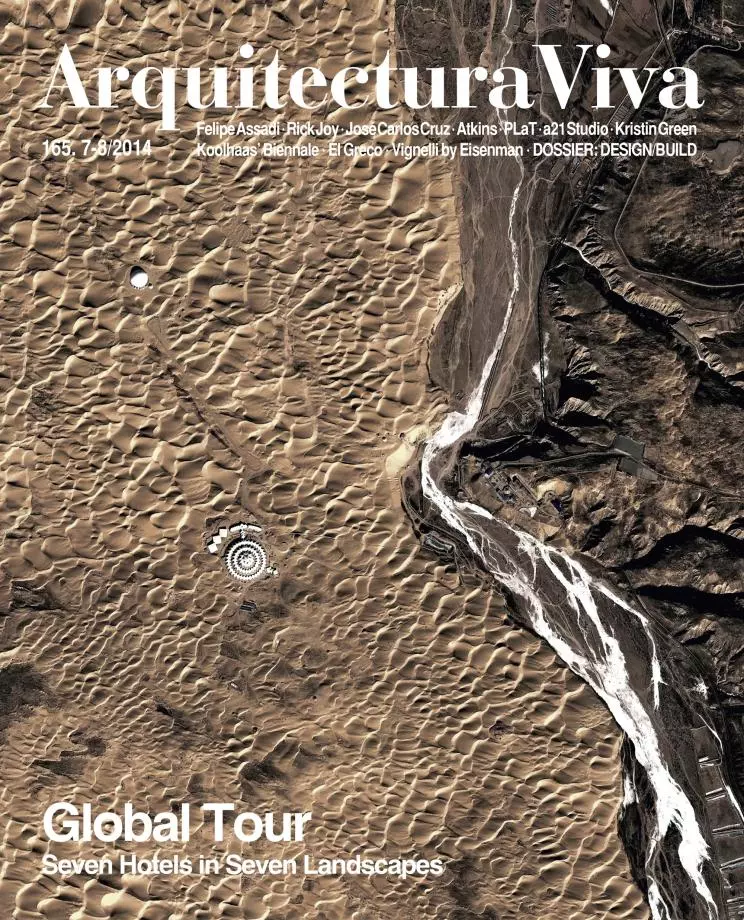
In the wake of Peter Zumthor’s courtyard, Herzog & de Meuron’s oval, and Sou Fujimoto’s poles, we have Smiljan Radic’s translucent stone. In charge of this year’s Serpentine Pavilion, the Chilean architect is for sure the least known in the list of stars who in the past fourteen years have taken turns planting their folies in Kensington Gardens. Maybe to compensate for it, his design is the strangest of all. It consists of a kind of bulb posed on several rocks looking like the ruins of a demolished dolmen. The bulb coils round itself to create a circuit which, starting at a footbridge, goes through the disturbing inner space. This interior opens on to the landscape by means of a small rectilinear opening. The influences recognized in the project are David Hockney’s illustrations for the tales of the Brothers Grimm, and also certain previous works of the architect himself, such as The Castle of the Selfish Giant (2010), a papier-maché doughnut, but it is impossible not to associate it with the surrealist sculptures of André Bloc or Frederick Kiesler. Nevertheless, unlike these Radic’s presents an ambiguous materiality in which a good part of the actual lure of the project lies. Whereas during the day the work comes across as a heavy and opaque volume, by night or from within it the yellowish walls take on a translucent appeearance and the volume becomes an ethereal chrysalis. Such an effect is achieved thanks to the material used: panels of fiberglass 10 millimeters thick, made in a workshop in the county of Yorkshire.





